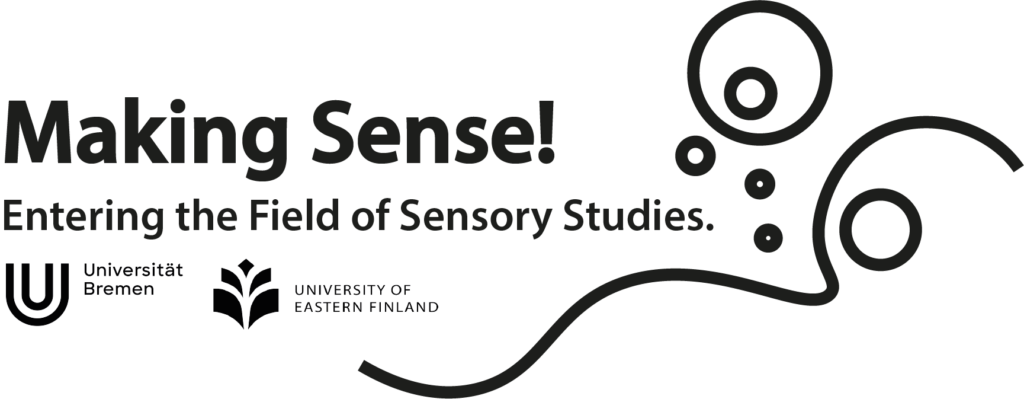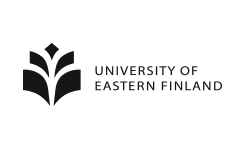Module – Our Approach on Teaching Sensory Studies
How to access the field of Sensory Studies? – This was the enterprise for our team when starting to think about this module. Some of the teachers were already skilled in the field of sound studies and ethnomusicology (Helmi Järviluoma; Javier Holzscheiter) or in Visual Anthropology (Martin Gruber). Others were newcomers e.g. in the field of smell studies (Cordula Weißköppel) or had a more theoretical expertise in the human senses (Dorle Dracklé). Having these diverse experiences in teaching Sensory Studies as background, made us keen to develop our concept collaboratively.
Start
From the very beginning we were convinced of entering the complex field of Sensory Studies by enabling practical sensory experiences for our students (Harris 2021). Due to the Covid 19 pandemic since March 2020 all were used to stay at the screen in our home-offices, so we initiated some exercises using our own experiences to motivate them to explore their domestic spaces: What do I hear when I open the window during the breaks? Or what kinds of smell do I consciously recognize when I am moving silently through my apartment?
Quite surprised that these short exercises, communicated digitally, worked better than expected, we faced the problem that each human sense would need special attention when introducing into the diverse methodological approaches and theoretical debates of Sensory Studies. How could we teach about general questions and simultaneously care about the specific approaches developed by specialists of sound, smell and visual studies?
Phase I (week 1-5): General Introduction to Sensory Studies
We decided to start with common ground, with our own bodies: The different human senses are embedded in our anatomy and its complex bio-neuro-processes, but also in our psycho-social skills of communication. Trying to isolate a certain sense from the other or only focussing on one is more difficult than realizing how much looking at a freshly made cappuccino may trigger certain smells associated with a special atmosphere, or listening to a certain music immediately provokes a subjective imagination and may activate the individual memory.
We designed an exercise which would support this synaesthetic or multisensory approach (Bal 2008) as many contemporary scholars share this insight about the interplay of the senses in our usual perception and communication with other human and non-human beings (Feld 1998).
Coming from this contemporary multisensory perspective we then raise the question why the analysis of distinct senses have become so dominant in the scientific approaches, even following a clear hierarchy between the (at least) 5 senses: Why have ways of seeing become much more prominent in academic and anthropological research than ways of listening or smelling? As there are excellent books by historians and anthropologists (Corbin 1982, Howes/ Classen 1995 among others) who reconstruct these kind of genealogical developments of a certain ranking of the senses in the European context, we turn then to the question of how the marginalized senses (like sound, smell and taste) were strengthened through new attention and innovative methodologies within Sensory Studies.
Phase II (week 6-10): Following a Sensory Trek
After these first lectures and readings on general questions in Sensory Studies we offer the students to choose between the Smell-, Sound- or Visual-Trek (=Phase 2). Due to pragmatic reasons (to work in smaller groups which are supervised by one teacher or tutor) and due to methodological specification for doing practical work with distinct senses, we split in three groups. Originally referring to the metaphor of „tracks“ by G. Marcus (1995) which are part and parcel of ethnographic research when exploring certain multi-sited-fields, our students shall get sensitive on different kinds of sensory tracks when exploring certain environments according to the „stations“, which means exercises and multi-media tools we have created for them. Finally we called these guided tours „treks“ as we recommend to follow all stations in a certain order and to reflect about the experiences the students make when doing their own research on listening, on smelling or on gazing.
Having conducted one of the three treks (supervised by a teacher/tutor or as independent studies) students should be motivated to exchange about their insights and experiences with the other trek-groups (=Phase 2 B). All will meet in plenary on zoom and will discuss about their first results or methodological challenges. It is intended that each student will formulate her or his individual ideas how to follow up in order to create a photo story or another multi-modal work representing the discoveries from the trek (which will be acknowledged as final „written“ and graded exam).
Phase III (week 11-13): Contextualization by Key-topics in Sensory Studies
In order to contextualize these first insights from individual and group work during the treks, we invite the students in the following weeks to deal with more abstract ideas and theoretical debates in Sensory Studies (=Phase 3). Among the complex field of transdisciplinary discussion we have chosen three key topics which are relevant for beginners:
- We refer to questions of intersubjective communication through the senses, and how certain norms or cultural ways of listening, ways of seeing, or ways of smelling have been established on a collective level. In particular we will learn about intergenerational transfer, and connected with that, we will deal with historical change of sensory patterns and experiences.
- We will deal with the debate on sensory un-commons: When and how do societies negotiate for example about noise or sound pollution? Or: Which odours are accepted and cultivated, and which ones should be avoided? Why are certain images forbidden in public and how do our societies educate or influence people visually?
- We will tackle the debate on re-presentation: How do established scholars approach the challenge to represent sensory experiences like touch and smell which are mostly invisible? How do the different senses collaborate with each other in order to communicate synaesthetic experiences; and what are the students` suggestions referring to their projects while working on the material gathered during the treks?
Conclusion (week 14)
Finally, we meet for feedback and evaluation of the course, but also for presenting and discussing the results of the students` work (their exams). As already practised last term (during summer 2021), we intend to present some of their multi-media products online on our blog.



